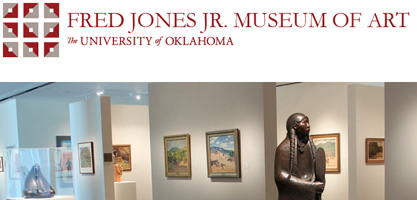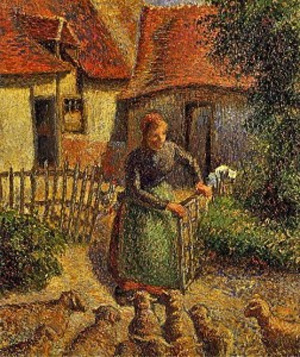Opinion: I am an University of Oklahoma Sooner, born, bred, and one day dead. My admiration for President David Boren stretches all the way back to my time on his “broom brigade” run for governor 40 years ago. But my university is engaged in something immoral, and it is time for Sooners to speak out.
The Meyers were a family of Jews living in France when the Nazis invaded in 1940. Merely because they were Jews, their homes were invaded, and all of their belongings plundered, including a treasured family painting by Camille Pissarro, named “Shepherdess Bringing in Sheep.”
The Meyers’ adopted daughter, Leone Meyer, survived the Nazi Holocaust, but her entire biological family was murdered by the Nazis at Auschwitz, including her 7-year-old brother. While in hiding, Raoul Meyer heroically provided information to the French resistance on German troop movements. The Meyers were victim to the horrific genocide that claimed more than 6 million Jewish lives. “Shepherdess Bringing in the Sheep” once hung in the home of these good people, before they lost their home to the Nazis.
 No one disputes the fact that the Nazis stole the painting from the Meyers. Listen to me to repeat that: No one disputes the fact that the Nazis stole the painting from the Meyers.
No one disputes the fact that the Nazis stole the painting from the Meyers. Listen to me to repeat that: No one disputes the fact that the Nazis stole the painting from the Meyers.
That painting is now prominently displayed at the OU’s Museum of Art, but there is not the barest footnote teaching its history of being looted by the Nazis. Leone Meyer’s request that OU return the painting was ignored, and now there is litigation against the university. In the litigation, OU has asked that the matter be summarily dismissed, based on three arguments: OU is part of the state of Oklahoma, and the state can’t be sued; the owners waited too long to sue us; and there was already a case deciding ownership in Switzerland soon after the war.
OU’s arguments that it can’t be sued to recover stolen art, and that Meyer waited too long to find the painting and request its return, are highly technical legal arguments. They are the sorts of argument one would expect a fine lawyer to make. They just aren’t the sorts of arguments you would expect a fine university to make. Is President Boren suggesting that sometimes it is too late to do the right thing? Is that what he tells students the university stands for — the guardian of technical legal precedent?
Let’s look closer at the key justification touted by the university.
OU says that a Swiss court ruling soon after the war established clear title to the painting. At first, this certainly led me to believe that the Swiss court must have determined that the painting was not stolen, or that the Meyer family had somehow legitimately transferred the painting to a third party. It’s not true. The truth is that Swiss complicity during and after the war assisting the transfer of Jewish property has now been well documented, as well as the bureaucracy thrown against Jewish victims. But critically, what the university obscures, rather than reveals, is that the Swiss legal rules at the time required the Meyers to prove that the current possessor of the painting actually knew it was stolen and acted in bad faith.
 The general American policy is to favor the true owner. That policy mirrors the ethical rules you and I learned from our parents, teachers and religious leaders. However, in Switzerland shortly after the war, the policy was to favor the “continuity of the market,” and victims of Nazi theft were left with the near impossible task of somehow proving the current possessor acted in bad faith. Listen, and you will hear the echoes of this “finders keepers” philosophy today from OU and Boren.
The general American policy is to favor the true owner. That policy mirrors the ethical rules you and I learned from our parents, teachers and religious leaders. However, in Switzerland shortly after the war, the policy was to favor the “continuity of the market,” and victims of Nazi theft were left with the near impossible task of somehow proving the current possessor acted in bad faith. Listen, and you will hear the echoes of this “finders keepers” philosophy today from OU and Boren.
Finally, university officials make ambiguous statements implying Leona Meyer might not be the lawful heir, and suggesting the entire history is not yet known. The evidence of ownership appears abundantly clear. But fine, if that is truly OU’s concern, why won’t OU propose an independent and neutral investigation or arbitration to determine heirship? That was the way in which a hauntingly similar case was resolved — as dramatized in the excellent movie “Woman in Gold.”
Frankly, it is revolting to see our university perpetuate crimes against humanity committed by Hitler. Our art museum should not be built on such evil. Teach our students about the Holocaust’s victims, and what timeless justice means by returning this painting to the rightful Holocaust survivors. Do this, instead of throwing expensive lawyers at the victims, hiding behind the skirts of the state and complaining about the passage of time. They say that possession is 9/10ths of the law, but perhaps it is in that other 1/10th that character resides.
Craig Rainey recently retired as senior vice president and general counsel for the Williams Companies and is a member of the Tulsa World Community Advisory Board. This opinion piece also appeared in The McCarville Report.

